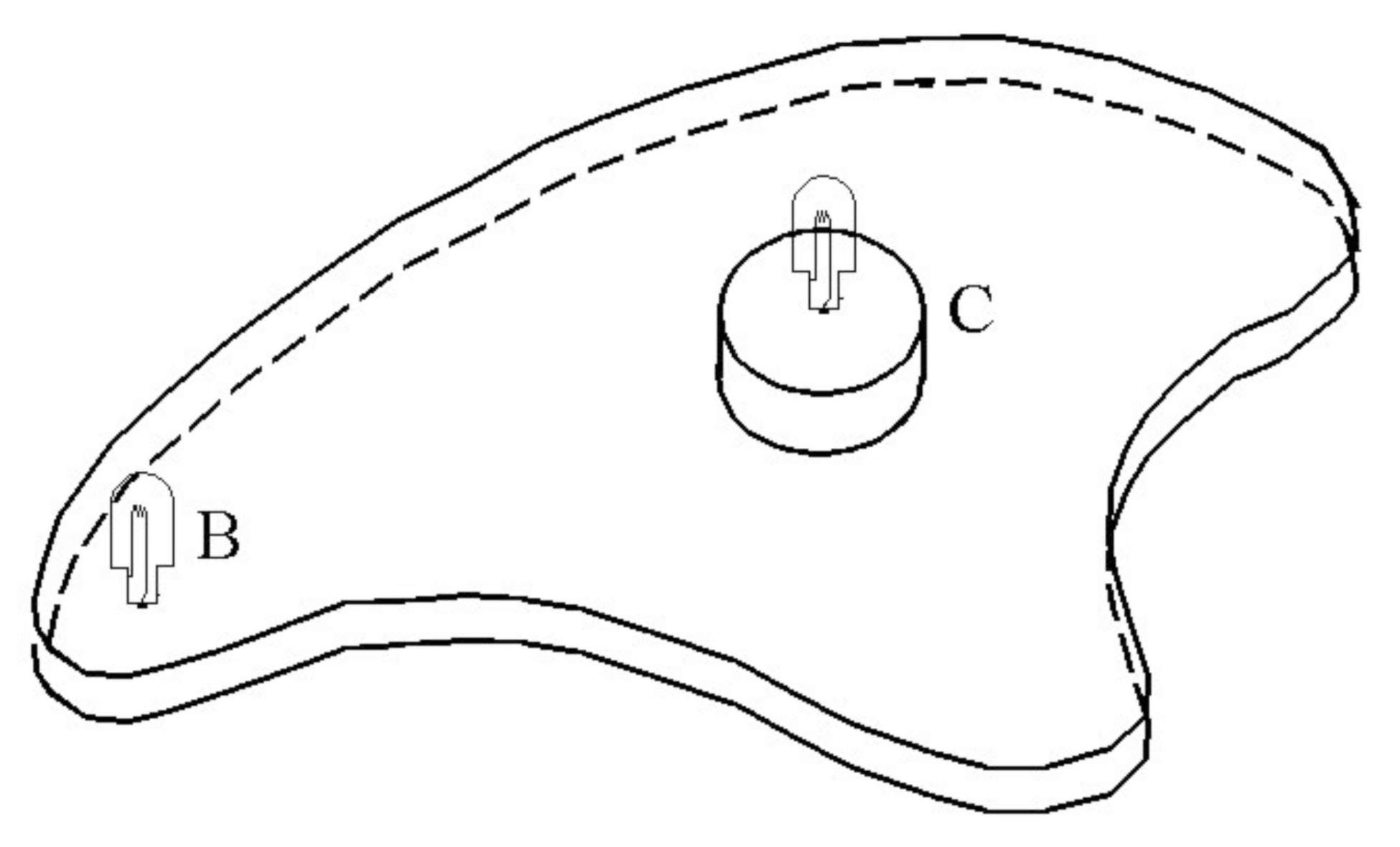Motion of the Centre of Mass 1
February 01, 2004 Filed in:
Demo CornerPatrick Whippey, Department of Physics & Astronomy, The University of Western Ontario
Do we really believe Newton’s Laws? This demonstration was born many years ago when a perceptive student challenged the assertion that a body free to move always rotates about its centre of mass. This demonstration requires an air table.

The figure shows a piece of plastic about 0.5 cm thick. It is about 20 cm long and 15 cm wide, and has an irregular shape. Mounted on the plastic are a battery and two bulbs. We use a pair of flat batteries of the kind used in small electronic devices together with some light-emitting diodes (LEDs), but a pair of AA batteries plus a pair of flashlight bulbs will serve just as well. Bulb C is located at the centre of mass, while bulb B is way off to one side.
We first cover bulb B. We give the “amoeba” a push and watch it travel over the air table. Bulb C travels in straight lines, changing direction only when the “amoeba” bounces off the edges of the air-table.
Then we cover bulb C. Bulb B travels in complex curved paths, making striking patterns of light. Finally, we expose both light bulbs. We can then see that bulb C travels in straight lines, while bulb B makes circles around it. This is a striking demonstration that the centre of mass travels in a straight line while all other points rotate around the centre of mass. This demonstration is best seen in the dark.
If you use LEDs, they may require a current-limiting resistor of about 150 ohms in series.
Column Editor: Ernie McFarland, Physics Department, University of Guelph, Guelph, Ontario, N1G 2W1 Tags: Motion


